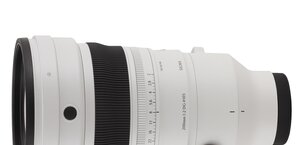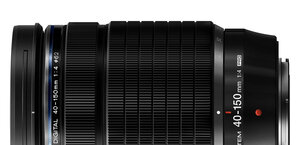Nikon Nikkor AF-S 50 mm f/1.4G
4. Image resolution
Let’s have a look at the performance of Nikkor AF-S 50 mm f/1.4 G with a small DX matrix first. The picture below shows the results for the center and the corners of the frame.
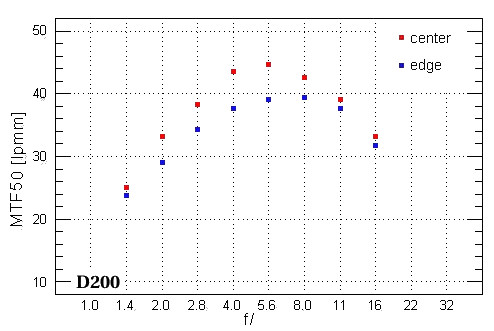
Please Support UsIf you enjoy our reviews and articles, and you want us to continue our work please, support our website by donating through PayPal. The funds are going to be used for paying our editorial team, renting servers, and equipping our testing studio; only that way we will be able to continue providing you interesting content for free. |
- - - - - - - - - - - - - - - - - - - - - - - - - - - - - - - - - - - - - - - - - - - - - - - -
Sharpness is low in the centre with the aperture wide open, which worry us. The result of 25 lpmm is a bit below the expectations, taking into account the class of the new lens. It’s worth notice that a Sigma 1.4/50, tested with a 8-megapixels matrix, reached almost 28 lpmm and the result was roughly the same for Pentax 1.4/55; a Zeiss Planar 1.4/50 reached even more, almost 30 lpmm.
Fortunately, after even a slight stopping down (2/3 EV is enough) the lens exceeds the level of 30 lpmm and the photos start to be sharp. However, if we look at the achievements of an older Nikkor AF 50 mm f/1.4D he improved even quicker with the closure so he is sharper for f/2.0 and f/2.8 from the new instrument.
The very best results, exceeding 44 lpmm, are seen around f/5.6. What’s interesting, this score, although excellent, is by no means a record; the highest scores with the Nikon D200 matrix reach 46-47 lpmm level. Even a cheap Nikkor AF 50 mm F/1.8D can perform better and exceed the level of 46 lpmm. Why the new Nikkor cannot do that? Perhaps the frame corner performance might explain it – the Nikkor’s AF-S 50 mm f/1.4G optics was designed to improve the corner results by worsening the center by 2-3 lpmm.
The DX matrix border is very sharp indeed – even with the aperture wide open the new Nikkor performs as well as some of competitors and slightly better than Pentax or Zeiss. Even by f/2.0 the images are useful and the higher aperture the better, with the results reaching almost 40 lpmm. To sum up, the new Nikkor’s DX matrix corner performance is the best of all light 50 mm lenses.
Let’s move to the full frame Nikon D3x matrix results. The resolution graph for the center and the corner of the frame is presented below.
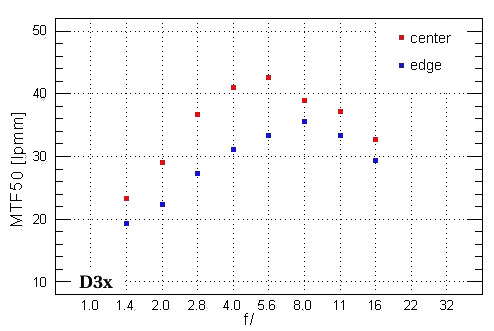
When it comes to the centre, the shape of the graph is almost an ideal copy of the D200 chart. The values are a bit lower, though, because of the lesser efficiency of the matrix, which we’ve described already in the D3x test.
The frame corner is another story. A full frame matrix is definitely more demanding than a DX so the lower results come as no surprise. The lens didn’t perform badly but we had to stop down to f/2.8 to get fully useful pictures.
To sum up, Nikkor AD-S 50 mm f/1.4G is undoubtedly a good lens. It can’t break resolution records in the frame center, although the pictures there are still of excellent quality, but it is very good, if not the best in its class, when it comes to the frame border performance. I must admit I like this solution. Instead of 2-3 lpmm more in the center, a difference difficult to notice, we get better corners and borders.
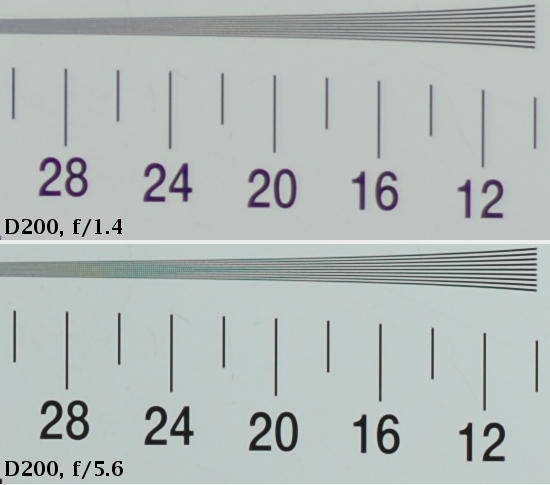 |




